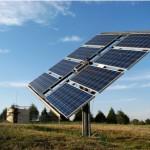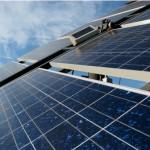Cornwall Set to Triple UK's Solar Capacity
Harnessing solar energy is widely regarded as one of the cleanest methods of generating environmentally friendly power, both in the domestic and commercial sphere. Microgeneration units are available for homes in the form of roof-based solar panels, which can generate electricity or provide solar water heating systems.
 In respect to solar-powered electricity generation, homes in the UK that avail of Government feed-in tariffs can produce enough power over 25 years to pay for equipment and installation costs – they may even turn a profit at 3p/kWh. On the commercial front, or at least in regard to the bigger environmental picture, it is essential that solar energy is used on a larger scale, which is exactly what is set to happen in Cornwall.
In respect to solar-powered electricity generation, homes in the UK that avail of Government feed-in tariffs can produce enough power over 25 years to pay for equipment and installation costs – they may even turn a profit at 3p/kWh. On the commercial front, or at least in regard to the bigger environmental picture, it is essential that solar energy is used on a larger scale, which is exactly what is set to happen in Cornwall.
Cornwall’s status as the sun, sea and surf capital of the UK is largely uncontested, which makes the county an obvious choice for companies planning to establish major solar panel installations in the country. The solar power industry in Cornwall is already enormous in comparison to other parts of the UK and the county also boasts the country’s first wind farm. At the end of May this year, a public consultation period began for a 15-acre solar energy farm at St Kew. The development is expected to cost just over £4 million and private investment funds have already been raised by a local farmer. Crucially, the 15-acre energy farm is set to become the first of ten such sites across Cornwall and the Isles of Scilly.
Assuming that each of the ten energy farms is approved, financed and constructed, the rewards for the UK’s economic and environmental aspirations would be considerable; indeed, the 10-site network of energy farms would effectively triple the UK’s existing solar generation capacity. The first proposed energy farm would produce enough solar electricity (2MW) to provide some 600 homes with power; however, the sites will not only look to the sun for clean energy. According to Silicon Vineyards, the consortium of local companies behind the project, biomass crops and anaerobic digesters would also be used to produce environmentally friendly energy for commercial export.














